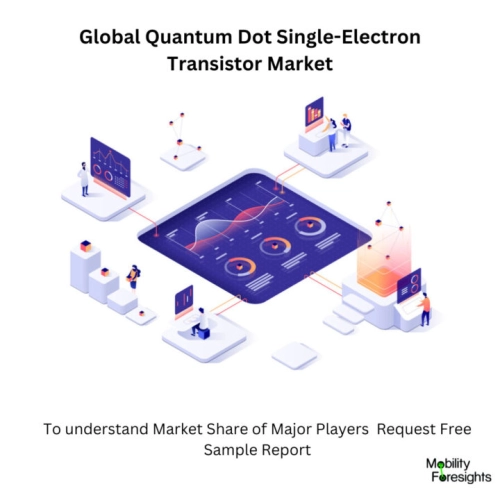
- Get in Touch with Us

Last Updated: Apr 25, 2025 | Study Period: 2023-2030
A sensitive electrical device based on the Coulomb blockade phenomenon is a single-electron transistor (SET). In this device, electrons travel from a source/drain to a quantum dot through a tunnel junction (conductive island).
Moreover, a third electrode known as the gate, which is capacitively connected to the island, can be used to adjust the electrical potential of the island. The conductive island is positioned between two capacitor-modelled tunnel junctions.
Future integrated devices have drawn a lot of interest in single-hole transistors (SHTs) and single-electron transistors (SETs).
New functionalities that are not present in traditional complementary metal-oxide-semiconductor devices are present in SETs and SHTs.
We pay particular emphasis to the high functionalities in silicon's SET and SHT, which function at room temperature and are made using a technique that is compatible with very large scale integration.

The Global Quantum Dot Single-Electron TransistorMarket accountedfor $XX Billion in 2022 and is anticipated to reach $XX Billion by 2030, registering a CAGR of XX% from 2023 to 2030.
A portion of a graphene flake can be isolated and connected with two constrictions (or nanoribbons) on the opposite sides, which act as the source and drain capacitors, to create a graphene SET.
To modify the electrostatic energy of the island, a Si backgate or a sidegate structure can be patterned on graphene. Studies commonly used plasma etching to pattern the SET structure on graphene.
Graphene SETs share the same fundamental structure as traditional SETs made of metals or semiconductors. But there is a distinct difference.
Because the system's charges are massless, they behave differently in terms of quantum confinement than they do in conventional SETs, where the charges follow the massive parabolic dispersion relation.
Future nano electronic devices look potential thanks to single electron transistors' low power requirements, quick speeds, and incredibly high integration densities.
The task is to compare the properties of silicon-based single-electron devices with those based on single-walled carbon nanotubes.
Long SWNT channels encircled by several short SWNTs are used to create single electron devices utilising single walled carbon nanotubes as electrodes.
The SET's properties will change depending on the dot's substance. The essential mechanism for these devices to function correctly is the Coulomb blockade effect.
| Sl no | Topic |
| 1 | Market Segmentation |
| 2 | Scope of the report |
| 3 | Abbreviations |
| 4 | Research Methodology |
| 5 | Executive Summary |
| 6 | Introduction |
| 7 | Insights from Industry stakeholders |
| 8 | Cost breakdown of Product by sub-components and average profit margin |
| 9 | Disruptive innovation in the Industry |
| 10 | Technology trends in the Industry |
| 11 | Consumer trends in the industry |
| 12 | Recent Production Milestones |
| 13 | Component Manufacturing in US, EU and China |
| 14 | COVID-19 impact on overall market |
| 15 | COVID-19 impact on Production of components |
| 16 | COVID-19 impact on Point of sale |
| 17 | Market Segmentation, Dynamics and Forecast by Geography, 2023-2030 |
| 18 | Market Segmentation, Dynamics and Forecast by Product Type, 2023-2030 |
| 19 | Market Segmentation, Dynamics and Forecast by Application, 2023-2030 |
| 20 | Market Segmentation, Dynamics and Forecast by End use, 2023-2030 |
| 21 | Product installation rate by OEM, 2023 |
| 22 | Incline/Decline in Average B-2-B selling price in past 5 years |
| 23 | Competition from substitute products |
| 24 | Gross margin and average profitability of suppliers |
| 25 | New product development in past 12 months |
| 26 | M&A in past 12 months |
| 27 | Growth strategy of leading players |
| 28 | Market share of vendors, 2023 |
| 29 | Company Profiles |
| 30 | Unmet needs and opportunity for new suppliers |
| 31 | Conclusion |
| 32 | Appendix |